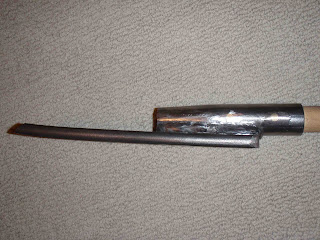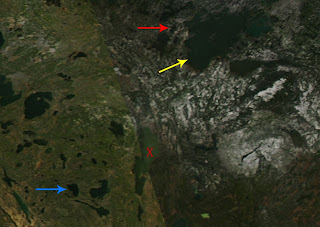1. For those very cold nights the two -20 bags zipped together provide lots of room, maybe too much room with a fairly sizable air pocket between us. But with the addition of our MEC Raven -7 down bags the air pocket is reduced. The benefits of this system are that we are in our own bags but still able to benefit from shared body heat. (Actually I'll likely be the one producing heat) The down side to this would be the added moisture produced by two bodies in the same bag causing them to ice up quickly during a multi day trek. This could be addressed with the addition of a couple of vapour barriers which I don't have at the moment but intend to make before out next camping trip. (which is planned for New Years eve) With the bags in this configuration I measured the loft to be around 11".
2. A second configuration would be to not zip the bags together but still have the Raven inside the Hybrid. Advantages are less moisture due to only one body, disadvantages are no shared body heat. A vapour barrier would add to the warmth of this system.
3. If I was on my own in an extremely cold situation I have a Marmot -5 synthetic bag that is an extra wide that can be used as an over bag. My original thought was to put all three bags together but when I did this and got inside, it was certainly warm but I found that there was very little room to move around and the down bags were being compressed, reducing the insulation value.
I guess I'll have some fun this winter testing these ideas.
Let it snow!

Raven -7 inside the Hybrid -20. 11 inches of lot!









